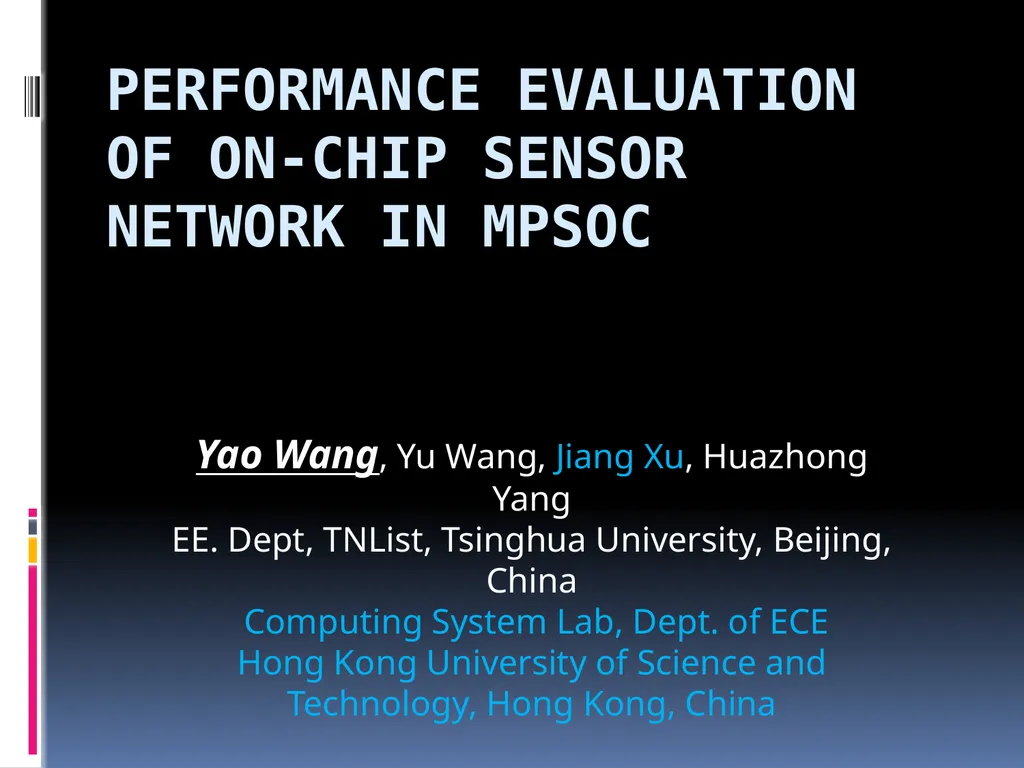
Performance Evaluation of On-Chip Sensor Network
Author: kittie-lecroy | Published: 2025-05-28
Description: Performance Evaluation of On-Chip Sensor Network in MPSoC Yao Wang, Yu Wang, Jiang Xu, Huazhong Yang EE. Dept, TNList, Tsinghua University, Beijing, China Computing System Lab, Dept. of ECE Hong Kong University of Science and Technology,
Download Presentation
Download the PPT/PDF: Download
Transcript:
Loading transcript…